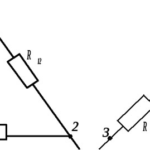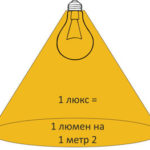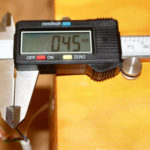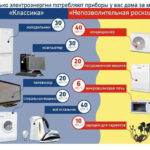Traditionally, a car's engine power is measured in horsepower (hp). The term was introduced by Scottish engineer and inventor James Watt in 1789 to show the numerical advantage of his steam engines over horses.

It is a historical unit of power measurement. It is not part of the International System of Units (SI) and is not uniform and generally accepted, nor is it derived from the unified SI units. Different countries have developed different numerical values for horsepower. Watt, introduced in 1882, characterizes the power more accurately. In practice, kilowatts (kW) are more commonly used.
In many PTCs, the engine is still characterized by the number of "horses". When this value needs to be converted to kilowatts, the main thing to remember is how many kilowatts in horsepower. There are few methods of calculation, with their help the values are calculated quickly and easily.
How to convert horsepower to kW
There are several options for mutual conversion of these units of measurement:
- Online calculators. The easiest and fastest way. Requires constant access to the Internet.
- Correspondence tables. Contains the most frequently encountered values and is always at your fingertips.
- Translation Formulas. Knowing the exact correspondence of units, you can quickly translate one number into another and vice versa.
In practice, the following numerical values are used:
- 1 hp = 0.735 kW;
- 1 kW = 1.36 hp.
The second correspondence is most often used: numbers greater than one are easier to work with. To do the calculations, the kW figure is multiplied by this coefficient. The calculation looks like this:
88 kW x 1.36 = 119.68 = 120 hp.
The reverse calculation - conversion from "horses" to kW - is made by dividing:
150 hp / 1,36 = 110,29 = 110 kW.
For simplicity, the value of 1.36 hp is often rounded to 1.4. This calculation gives an error, but for general conversion of kilowatts to horsepower in a rough estimation of power this is enough.
Why 0.735 kW.
1 hp. is approximately equal to 75 kgf/m/s, which is a measure of the force required to lift a weight of 75 kg to a height of 1 m in 1 second. Different countries use different types of this unit with different values:
- metric = 0.735 kW (used in Europe, used in the standard conversion from kW to hp);
- mechanical = 0.7457 kW (formerly used in England and English-speaking countries, almost retired);
- electrical = 0.746 kW (used for marking electric motors);
- boiler = 9.8 kW (used in the U.S. in power and industry);
- hydraulic = 0.7457.
In Russia, the European, called metric horsepower, equal to 0.735 kW is used. It is formally obsolete, but continues to be used in calculating taxes.
Practical Aspect
The amount of transport tax in Russia depends on the engine power. The calculation unit in this case is taken as hp. c.: the tax rate is multiplied by their number. The number of payment categories depends on the region. For example, in Moscow, 8 categories are defined for passenger cars (prices are valid for 2018):
- up to 100 hp = 12 rubles;
- 101-125 hp = 25 rubles;
- 126-150 hp = 35 rubles;
- 151-175 hp = 45 rubles;
- 176-200 hp = 50 rubles;
- 201-225 hp = 65 rubles;
- 226-250 hp = 75 rubles;
- From 251 hp = 150 rubles.
The price is given for 1 hp. Accordingly, at 132 hp the car owner will pay 132 x 35 = 4,620 rubles per year.
Previously in Great Britain, France, Belgium, Spain, Germany the tax on a vehicle depended on the number of "horses". With the introduction of the kilowatt in some countries (France) abandoned hp completely in favor of a new universal unit, in others (UK) as the basis of transport tax began to take into account the size of the car. In the Russian Federation, the tradition of using the old unit of measurement is still observed.
In addition to the calculation of transport tax, in Russia, this unit is used in automobile liability insurance (OSAGO): when calculating the premium for compulsory insurance of vehicle owners.
Another practical application, now of a technical nature, is to calculate the actual engine power of a car. The terms gross and net are used when measuring. The gross measurements are made on the bench without taking into account the operation of the associated systems - generator, cooling pump, etc. The gross value is always higher, but does not show the power produced under normal conditions. If the kilowatts indicated in the documents are converted to hp in this way, you can only estimate the amount of engine work.
This is not practical for accurately estimating the horsepower of a machine, because the error will be 10-25%. The actual engine performance will be overestimated, and the prices will be increased when calculating the vehicle tax and MTPL, since every unit of power is paid for.
The net measurement on the bench is aimed at analyzing the operation of the machine under normal conditions, with all auxiliary systems. The net figure is smaller, but more accurately reflects power under normal conditions with all systems in operation.
A dynamometer, a device connected to the engine, will help measure power more accurately. It puts a load on the engine and measures the amount of energy given out by the engine against the load. Some service stations offer the use of dynamometer stands (dynostands) for such measurements.

You can also measure the power yourself, but with some error. By connecting a laptop with a cable to the car and running a special application, you can record the engine power in kW or hp at different driving speeds. The advantage of this option is that the program will display the error of calculations immediately after the control estimate, as well as immediately convert from kilowatts to horsepower, if the measurement was carried out in SI units.
Off-system units of measurement are slowly becoming a thing of the past. Power values are increasingly being stated in watts. However, as long as horsepower is used, there will be a need to convert it.
Related articles:






